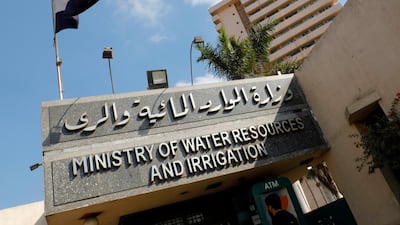Egypt, Ethiopia and Sudan ended two days of negotiations on Tuesday on the impact of a soon-to-be-completed hydroelectric dam on the Nile, which Egypt fears will reduce its vital share of the river’s waters.
The round of talks in Cairo was the second of four between the three nations agreed during a meeting last month in Washington.
They have so far been attended by representatives of the US government and the World Bank. Progress will be assessed at meetings in Washington on December 9 and January 13. If an agreement is not reached by January 15, a fourth party will be invited to mediate in the dispute.
Egypt, a mainly desert nation of some 100 million people, maintains that a significant drop in its share of the Nile water would affect the livelihoods of hundreds of thousands of farmers, thus threatening the country’s food security. It wants the reservoir behind the dam be filled over seven years to reduce the impact downstream. It also wants Ethiopia to release 40 billion cubic meters of water annually and show flexibility during droughts.
Ethiopia, where the dam has become a symbol of national pride and is marketed as essential to the nation’s progress, has grudgingly agreed to the first demand but rejected Cairo’s proposal that it pledges 40 billion cubic meters and show flexibility during drought spells.
The reservoir behind the Ethiopian dam can take up to 74 billion cubic meters, a capacity the Egyptians maintain to be considerably more than what’s needed to generate power.
Egypt’s position was bluntly outlined by Irrigation Minister Mohammed Abdel Atty during the opening session of the latest talks on Monday.
“Let me be crystal clear … Egypt wants to reach an agreement on the Renaissance Dam that covers the filling plan (of the reservoir) and allows Ethiopia to generate hydropower … but the agreement must safeguard downstream nations from the huge damage that can be caused by its use of the water,” said the minister.
“There is a great deal of importance that must be attached to the possible impact of droughts during the filling and operation of the Ethiopian dam.”
The dam is built on the Blue Nile, which accounts for about 65 per cent of the water reaching Egypt. It meets the White Nile, which originates in central Africa, near Khartoum, Sudan’s capital, to form the Nile river, which then flows through the deserts of northern Sudan and Egypt until it drains in the Mediterranean.


